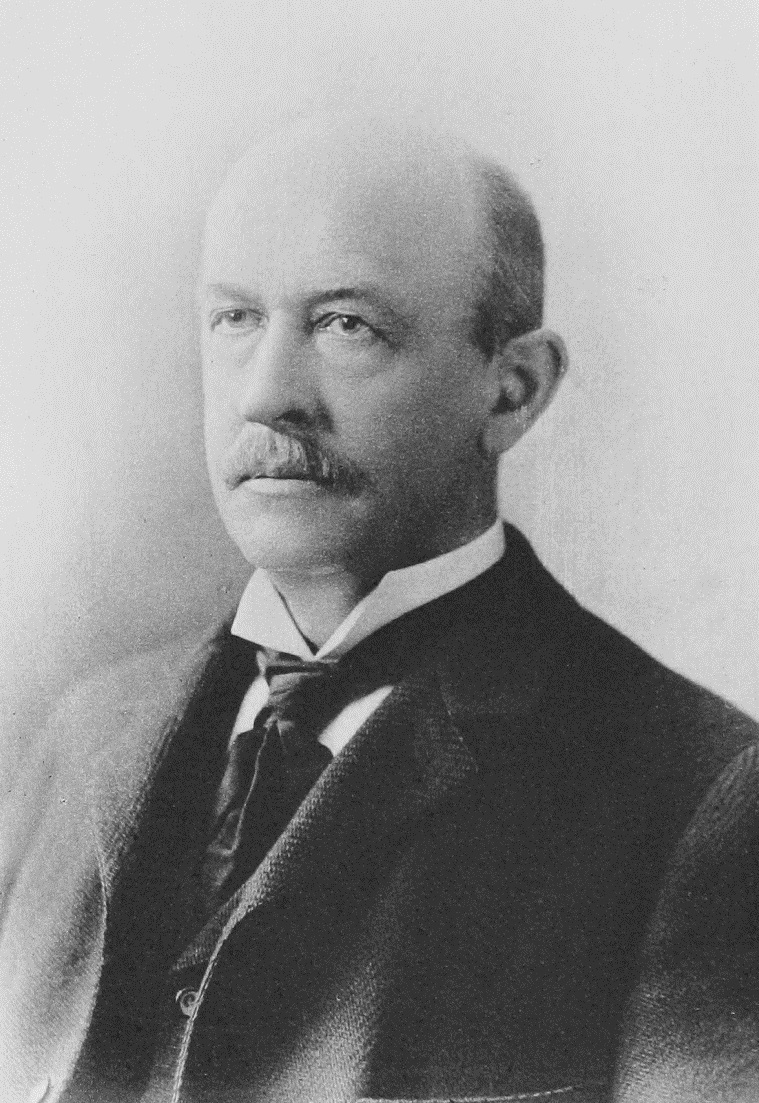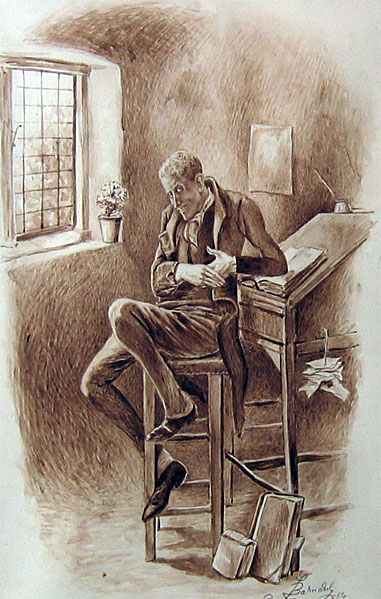|
Hostile Media Effect
The hostile media effect, originally deemed the hostile media phenomenon and sometimes called hostile media perception, refers to the tendency for individuals with a strong preexisting opinion on an issue to perceive media coverage as biased against their position's side and favorable of their antagonists' point of view. Partisans from opposite sides of an issue will tend to find the same coverage to be biased against them.summary The phenomenon was first proposed and experimentally studied in the 1980s by Robert Vallone, and Mark Lepper.Vallone, R.E., Le ... [...More Info...] [...Related Items...] OR: [Wikipedia] [Google] [Baidu] |
Media Coverage
Media may refer to: Communication * Means of communication, tools and channels used to deliver information or data ** Advertising media, various media, content, buying and placement for advertising ** Interactive media, media that is interactive ** Media adequacy, specific aspects important for a successful transfer of information ** MEDIA sub-programme of Creative Europe, a European Union initiative to support the European audiovisual sector ** New media, the combination of traditional media and information and communications technology ** Print media, communications delivered via paper or canvas ** Recording medium, devices used to store information * Mass media, the institutions and methods of reaching a large audience ** Broadcast media, communications delivered over mass electronic communication networks ** News media, mass media focused on communicating news ** Published media, any media made available to the public * Electronic media, communications delivered via e ... [...More Info...] [...Related Items...] OR: [Wikipedia] [Google] [Baidu] |
Cognition
Cognition is the "mental action or process of acquiring knowledge and understanding through thought, experience, and the senses". It encompasses all aspects of intellectual functions and processes such as: perception, attention, thought, imagination, intelligence, the formation of knowledge, memory and working memory, judgment and evaluation, reasoning and computation, problem-solving and decision-making, comprehension and production of language. Cognitive processes use existing knowledge to discover new knowledge. Cognitive processes are analyzed from very different perspectives within different contexts, notably in the fields of linguistics, musicology, anesthesia, neuroscience, psychiatry, psychology, education, philosophy, anthropology, biology, systemics, logic, and computer science. These and other approaches to the analysis of cognition (such as embodied cognition) are synthesized in the developing field of cognitive science, a progressively autonomou ... [...More Info...] [...Related Items...] OR: [Wikipedia] [Google] [Baidu] |
Fake News
Fake news or information disorder is false or misleading information (misinformation, disinformation, propaganda, and hoaxes) claiming the aesthetics and legitimacy of news. Fake news often has the aim of damaging the reputation of a person or entity,Schlesinger, Robert (April 14, 2017)"Fake news in reality" '' U.S. News & World Report''. or making money through advertising revenue. Although false news has always been spread throughout history, the term ''fake news'' was first used in the 1890s when sensational reports in newspapers were common. Nevertheless, the term does not have a fixed definition and has been applied broadly to any type of false information presented as news. It has also been used by high-profile people to apply to any news unfavorable to them. Further, disinformation involves spreading false information with harmful intent and is sometimes generated and propagated by hostile foreign actors, particularly during elections. In some definitions, fake news i ... [...More Info...] [...Related Items...] OR: [Wikipedia] [Google] [Baidu] |
Online Media
In mass communication, digital media is any communication media that operates in conjunction with various encoded machine-readable data formats. can be created, viewed, distributed, modified, listened to, and preserved on a digital electronic device, including digital data storage media (in contrast to analog electronic media) and digital broadcasting. ''Digital'' is defined as any data represented by a series of digits, and ''media'' refers to methods of broadcasting or communicating this information. Together, ''digital media'' refers to mediums of digitized information broadcast through a screen and/or a speaker. This also includes text, audio, video, and graphics that are transmitted over the internet for viewing or listening to on the internet. Digital media platforms, such as YouTube, Kick, and Twitch, accounted for viewership rates of 27.9 billion hours in 2020. A contributing factor to its part in what is commonly referred to as ''the digital revolution'' can be a ... [...More Info...] [...Related Items...] OR: [Wikipedia] [Google] [Baidu] |
Digital Age
The Information Age is a History by period, historical period that began in the mid-20th century. It is characterized by a rapid shift from traditional industries, as established during the Industrial Revolution, to an economy centered on information technology. The onset of the Information Age has been linked to the development of the transistor in 1947. This technological advance has had a significant impact on the way information is processed and transmitted. According to the United Nations Public Administration Network, the Information Age was formed by capitalizing on Miniaturization, computer miniaturization advances, which led to Modernization theory, modernized information systems and internet communications as the driving force of Sociocultural evolution, social evolution. There is ongoing debate concerning whether the Third Industrial Revolution has already ended, and if the Fourth Industrial Revolution has already begun due to the recent breakthroughs in areas such ... [...More Info...] [...Related Items...] OR: [Wikipedia] [Google] [Baidu] |
Ingroup
In social psychology and sociology, an in-group is a social group to which a person psychologically identifies as being a member. By contrast, an out-group is a social group with which an individual does not identify. People may for example identify with their peer group, family, community, sports team, political party, gender, sexual orientation, religion, or nation. It has been found that the psychological membership of social groups and categories is associated with a wide variety of phenomena. The terminology was made popular by Henri Tajfel and colleagues beginning in the 1970s during his work in formulating social identity theory. The significance of in-group and out-group categorization was identified using a method called the minimal group paradigm. Tajfel and colleagues found that people can form self-preferencing in-groups within a matter of minutes and that such groups can form even on the basis of completely arbitrary and invented discriminatory characteristics, ... [...More Info...] [...Related Items...] OR: [Wikipedia] [Google] [Baidu] |
Social Identity Theory
Social identity is the portion of an individual's self-concept derived from perceived membership in a relevant social group. As originally formulated by social psychologists Henri Tajfel and John Turner in the 1970s and the 1980s, social identity theory introduced the concept of a social identity as a way in which to explain intergroup behaviour. "Social identity theory explores the phenomenon of the 'ingroup' and 'outgroup', and is based on the view that identities are constituted through a process of difference defined in a relative or flexible way depends on the activities in which one engages." This theory is described as a theory that predicts certain intergroup behaviours on the basis of perceived group status differences, the perceived legitimacy and stability of those status differences, and the perceived ability to move from one group to another. This contrasts with occasions where the term "social identity theory" is used to refer to general theorizing about huma ... [...More Info...] [...Related Items...] OR: [Wikipedia] [Google] [Baidu] |
Media Literacy
Media literacy is an expanded conceptualization of literacy that includes the ability to access and analyze Media (communication), media messages, as well as create, reflect and take action—using the power of information and communication—to make a difference in the world. Media literacy applies to different types of media, and is seen as an important skill for work, life, and citizenship. Examples of media literacy include reflecting on one's media choices, identifying sponsored content, recognizing stereotypes, analyzing propaganda and discussing the benefits, risks, and harms of media use. Critical analysis skills can be developed through practices like constructivist media decoding and lateral reading, which entails looking at multiple perspectives in assessing the quality of a particular piece of media. Media literacy also includes the ability to create and share messages as a socially responsible communicator, and the practices of safety and civility, information access, ... [...More Info...] [...Related Items...] OR: [Wikipedia] [Google] [Baidu] |
The Daily Show
''The Daily Show'' is an American late-night talk show, late-night talk and news satire television program. It airs each Monday through Thursday on Comedy Central in the United States, with extended episodes released shortly after on Paramount+. ''The Daily Show'' draws its comedy and satire from recent news stories, political figures, and media organizations. It often uses self-referential humor. The half-hour-long show premiered on July 22, 1996, and was first hosted by Craig Kilborn until December 17, 1998. Jon Stewart then took over as the host from January 11, 1999, until August 6, 2015, making the show more strongly focused on political satire and news satire, in contrast with the pop culture focus during Kilborn's tenure. Stewart was succeeded by Trevor Noah, whose tenure began on September 28, 2015, and ended in December 2022. Under the different hosts, the show has been formally known as ''The Daily Show with Craig Kilborn'' from 1996 to 1998, ''The Daily Show with Jon ... [...More Info...] [...Related Items...] OR: [Wikipedia] [Google] [Baidu] |
Selective Perception
Selective perception is the tendency to not notice and more quickly forget stimuli that cause emotional discomfort and contradict prior beliefs. For example, a teacher may have a favorite student because they are biased by in-group favoritism. The teacher ignores the student's poor attainment. Conversely, they might not notice the progress of their least favorite student. It can also occur when consuming mass media, allowing people to see facts and opinions they like while ignoring those that do not fit with particular opinions, values, beliefs, or frame of reference. Psychologists believe this process occurs automatically. Selective perception has roots in cognitive psychology, where it is studied as a fundamental part of how individuals filter and process information based on biases, expectations, and past experiences. It is closely related to concepts like confirmation bias—favoring information that aligns with one’s beliefs—and cognitive dissonance, the discomfort of hold ... [...More Info...] [...Related Items...] OR: [Wikipedia] [Google] [Baidu] |
Cognitive Dissonance
In the field of psychology, cognitive dissonance is described as a mental phenomenon in which people unknowingly hold fundamentally conflicting cognitions. Being confronted by situations that challenge this dissonance may ultimately result in some change in their cognitions or actions to cause greater alignment between them so as to reduce this dissonance. Relevant items of cognition include peoples' actions, feelings, ideas, beliefs, Value (ethics), values, and things in the Natural environment, environment. Cognitive dissonance exists without signs but surfaces through psychological stress when persons participate in an action that goes against one or more of conflicting things. According to this theory, when an action or idea is psychologically inconsistent with the other, people automatically try to resolve the conflict, usually by reframing a side to make the combination congruent. Discomfort is triggered by beliefs clashing with new information or by having to conceptually re ... [...More Info...] [...Related Items...] OR: [Wikipedia] [Google] [Baidu] |
Confirmation Bias
Confirmation bias (also confirmatory bias, myside bias, or congeniality bias) is the tendency to search for, interpret, favor and recall information in a way that confirms or supports one's prior beliefs or Value (ethics and social sciences), values. People display this bias when they select information that supports their views, ignoring contrary information or when they interpret ambiguous evidence as supporting their existing attitudes. The effect is strongest for desired outcomes, for emotionally charged issues and for deeply entrenched beliefs. Biased search for information, biased interpretation of this information and biased memory recall, have been invoked to explain four specific effects: # ''attitude polarization'' (when a disagreement becomes more extreme even though the different parties are exposed to the same evidence) # ''belief perseverance'' (when beliefs persist after the evidence for them is shown to be false) # the ''irrational primacy effect'' (a greater relia ... [...More Info...] [...Related Items...] OR: [Wikipedia] [Google] [Baidu] |








